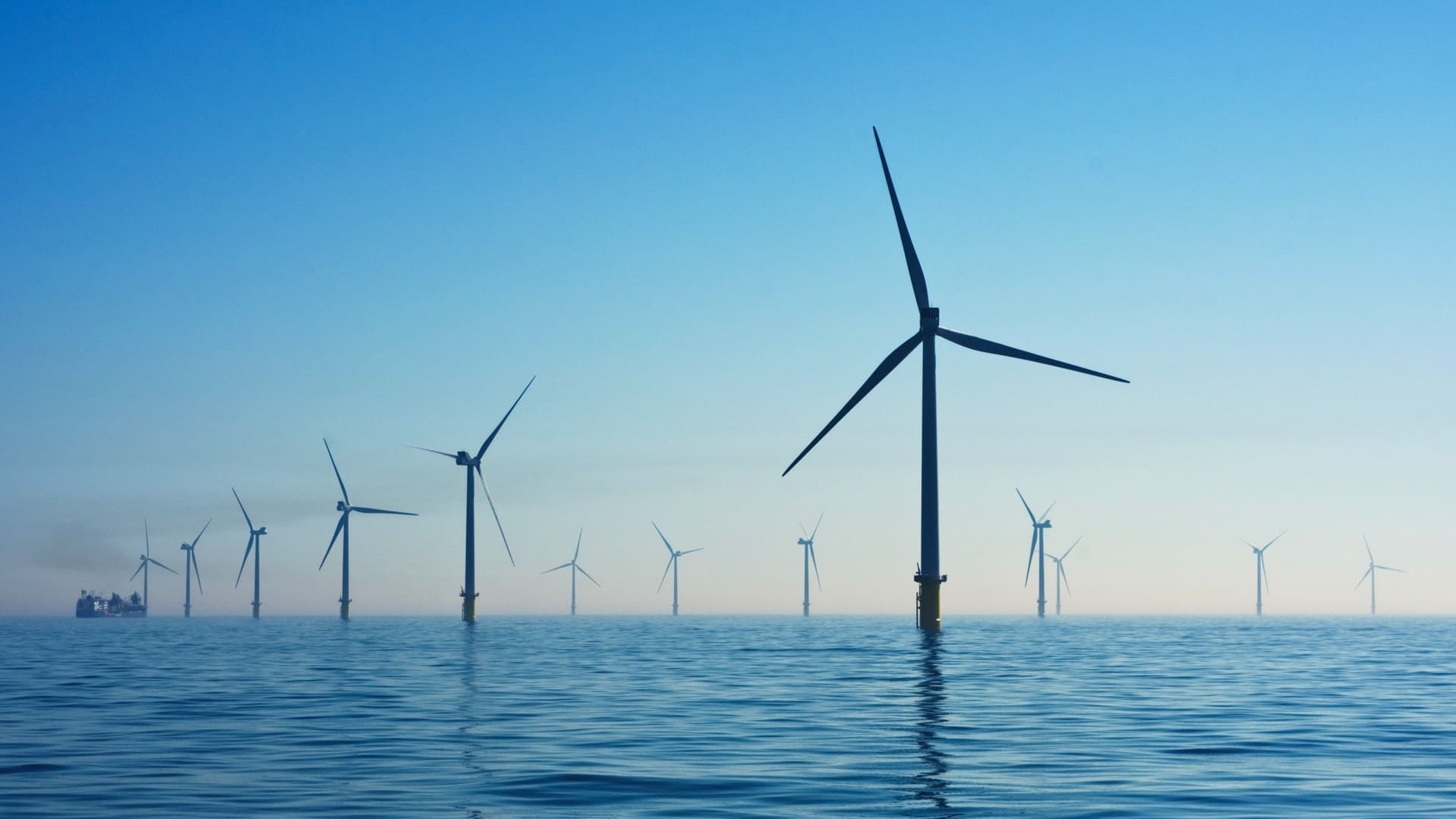Study Finds Offshore Wind Could Drive Down Energy Costs in New England

For Immediate Release
A new analysis led by North Carolina State University researchers found offshore wind power could help lower wholesale electricity prices on average for six states in New England, with relatively low risk of wind turbines failing during extreme winter storms.
Although very high wind speeds during winter storms could cause turbines to go temporarily offline, they found the largest risk of sudden losses of wind power would be in summer when wind speeds are lowest. The findings, published in the journal Energy, could help utilities, policymakers and consumers in New England determine what to expect in terms of price and reliability from adding offshore wind power in the region.
“Adding offshore wind to this market reduces wholesale prices for electricity overall and reduces emissions pretty consistently,” said Jordan Kern, assistant professor of forestry and environmental resources at NC State. “When we consider these bad winter storms, the cases are rare when you’d lose wind power due to excessively high wind speeds, and even then it doesn’t break the system or cause a shock to the market. A bigger issue we identified is what to do in the summertime, when it’s really hot, and wind speeds are low.”
There are plans to add significant additional wind power capacity in New England – as much as 60% of proposed new power generation would come from offshore and onshore wind farms. Already, the region is home to the nation’s first major offshore wind farm: a 30-megawatt farm off the cost of Rhode Island. And while wind power is expected to be a “saving grace” during extreme winter storms, researchers wanted to look at whether storms could also disrupt power supplies and drive up prices since turbines will shut off at wind speeds over 55 miles per hour.
“Land-based wind power makes up most of all wind power in the U.S.,” Kern said. “A lot of that is located in the middle of the country. If you live on the East Coast, though, land is expensive, and wind speeds are lower. That’s when offshore starts to look good.”
In the analysis, researchers used a model of the power grid to simulate the effect of additional wind power on power prices in six states in New England – Connecticut, Maine, Massachusetts, New Hampshire, Rhode Island and Vermont – during an extreme cold snap in December 2017 to January 2018. During the storm, electricity demand and natural gas prices spiked because of a “bomb” cyclone storm.
They found added offshore wind power decreased the severity of price spikes during the cold snap, even though there was a sudden loss of power when the turbines cut off on one day due to the cyclone storm.
On average, they found wholesale prices would have dropped by $28.81 megawatts per hour if there had been an additional 4,000 megawatts of offshore wind power online during the storm.
“We were looking to see if there would be blackouts because of this sudden lack of energy from offshore wind power plants, but we didn’t see a case where the system went into a blackout in any of the scenarios we evaluated,” said the study’s lead author Kerem Ziya Akdemir, a graduate student in forestry and environmental resources at NC State. “Most of the time during winter weather events, having wind is a good thing because the wind speeds are high. Only rarely did the wind speed get so high that the wind turbines shut off completely.”
They also looked whether adding 800 or 4,000 megawatts worth of offshore wind power would impact the price of power across 69 years between 1949 and 2018, compared to if there were no additional offshore wind capacity added. They found that additional wind power lowered the average wholesale price of electricity across the study period.
“We observed that if we increase the offshore wind capacity in the region, generally the wholesale prices will be lower,” Akdemir said. “There were one or two instances where we observed very, very high prices because excessive wind speeds caused the turbines to cut off, leading to a sudden loss of wind power in the region, but those did not have very serious consequences for the New England electricity grid.”
In the scenario with the most wind power added, prices increased by an average of 89 cents per megawatt hour during cut-out events when the turbines were shut off.
Cut-out events from excessive wind speeds were also not the cause of the highest prices in the analysis. The most frequent and severe price increases happened during summer months when people use a lot of power to cool their homes and wind speeds were low.
“In the wintertime, there’s a little bit less demand for electricity than in the summer, so there’s some other power plants that can kick on and replace the wind quickly,” Kern said.
The study looked at wholesale prices of electricity, and the researchers said the question of how wind generation could impact the cost of power for consumers is still open.
“The findings overall suggest that adding wind offshore to the system almost all the time will result in lower market prices and lower emissions,” Kern said. “Whether that means that consumers will pay less for electricity is a much trickier question. It’s not cheap to build offshore wind farms; you have to build them in the ocean. Consumers could have to pay for that.”
The study, “Assessing risks for New England’s wholesale electricity market from wind power losses during extreme winter storms,” was published online in Energy. The study was co-authored by Jonathan Lamontagne of Tufts University. The study was funded by the U.S. Department of Energy Office of Science as part of research in the MultiSector Dynamics, Earth and Environmental System Modeling Program.
-oleniacz-
Note to authors: The abstract follows.
“Assessing risks for New England’s wholesale electricity market from wind power losses during extreme winter storms”
Authors: Kerem Ziya Akdemir, Jordan D. Kern and Jonathan Lamontagne
Published online in Energy on April 4, 2022
DOI: 10.1016/j.energy.2022.123886
Abstract: In the United States, New England faces difficulties from severe winter weather, during which its power grid simultaneously experiences high natural gas prices and electricity demand, leading to spikes in wholesale electricity prices. In recent years, a significant amount of offshore wind power capacity has been planned for the region, and previous studies have suggested the presence of offshore wind could lower emissions and market prices during cold snaps. However, there has been limited consideration of potential wind power losses during extreme winter weather due to excessive wind speeds, which could lead to sudden losses of wind power. This aim of this study is to quantify risks associated with sudden wind power losses during extreme winter weather, especially the potential for these events to cause spikes in the wholesale electricity price. Results suggest that these so-called wind turbine “cut-out” events likely represent a minor risk compared to the loss of wind power due to low wind speeds and sudden drops in wind speeds during summer, when demand for electricity is higher. Overall, the benefits of having offshore wind power during extreme winter weather appear to outweigh the risks associated with relatively rare cut-out events caused by excessive wind speeds.


